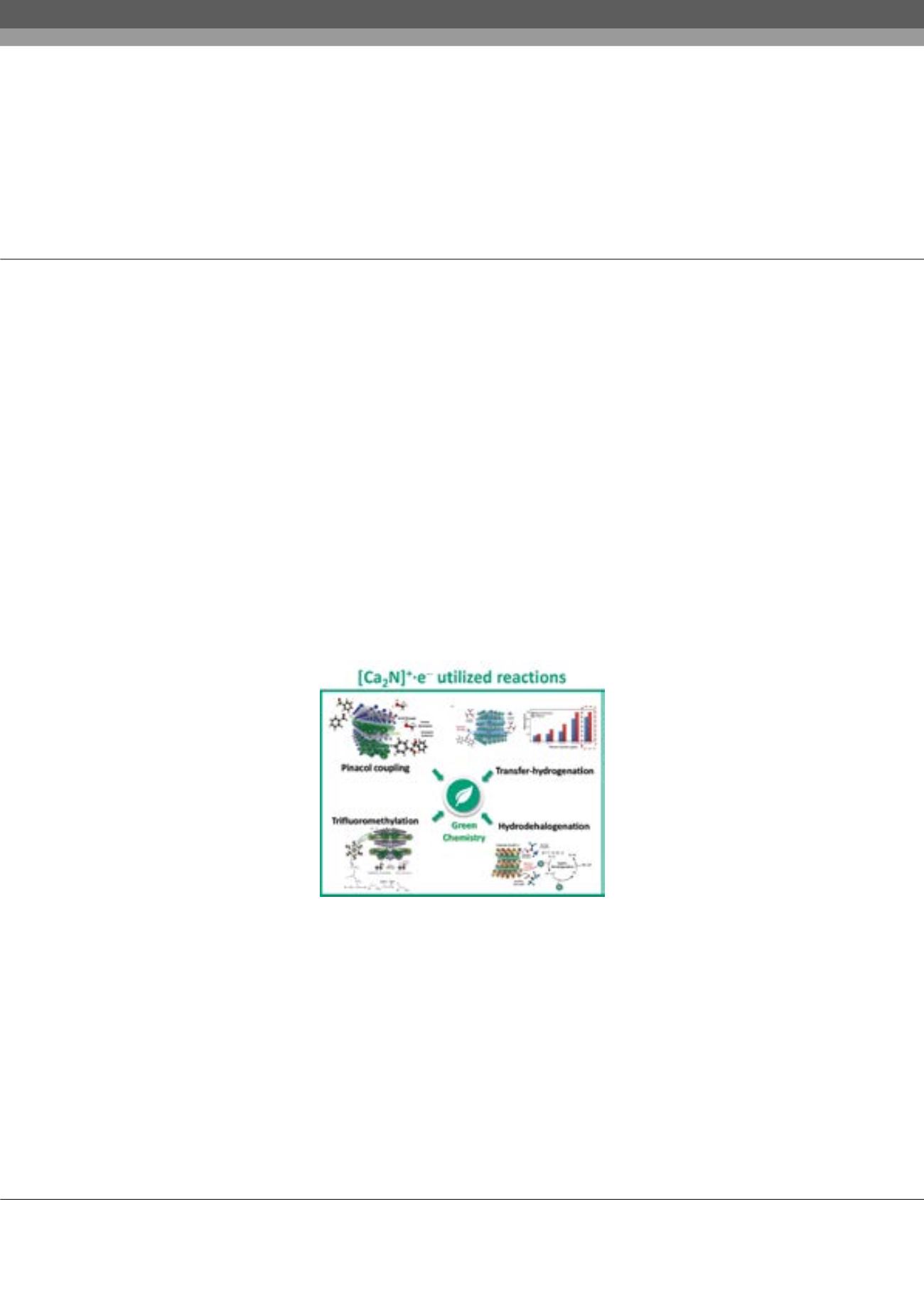

Notes:
Volume 3, Issue 2 (Suppl)
Trends in Green chem
ISSN: 2471-9889
Environmental & Green Chemistry 2017
July 24-26, 2017
Page 81
5
th
International Conference on
6
th
International Conference on
July 24-26, 2017 Rome, Italy
Environmental Chemistry and Engineering
Green Chemistry and Technology
&
The new class of green material: Two-dimensional electride [Ca
2
N]+·e-
Ye Ji Kim
Sungkyunkwan University, Republic of Korea
E
lectrides, which are ionic crystals trapping anionic electrons in the structural cavities, have attracted attention due to their
exotic properties such as a low work function. The first crystalline organic electride was synthesized from solvated electron,
alkali metal-ammonia solutions, by James L. Dye in 1983. The temperature instability of organic electride have been solved by the
discovery of room temperature stable inorganic electrides [Ca
24
Al
28
O
64
]4+·4e-)] and [Ca
2
N]+·e-. The [Ca
2
N]+·e- electride showed
the delocalized anionic electrons within the interlayer spacing of ~0.4 nm, showing the low work function value of 2.6 eV with
the electron concentration of~1.37 x1022 cm
-3
, which are comparable to typical alkali metals. Due to low work function and high
electron concentration, an outstanding performance in organic chemical synthesis such as with high electron transfer ability has been
anticipated. Charge transfer in and out of inorganic/organic materials from and to counterpart materials is a key issue to promote the
chemical reactions. In the organic chemistry, there are important intermediates that are generated by charged transfer; carbanion or
radical. To produce the radical or carbanion intermediates, single electron transfer agents or photo catalysts such as samarium iodide,
iridium complex and cadmium alloys was generally utilized. However, the usage of transition metals and rare-earth metals which has
the toxicity for human bodies and environmentally harmful residual products. In view of sustainable green chemistry, the electride
which consisted of earth abundant elements (calcium and nitrogen) utilized reaction system could be the promising solution. In this
talk, several inorganic electride utilized organic reactions, pinacol coupling reactions, trifluoromethylations, transfer-hydrogenations
and hydrodehalogenations, will be introduced as a new strategy for organic synthetic chemistry.
Biography
Ye Ji Kim got her Bachelor’s degree in Chemistry from Kyungsung University in 2013. Since 2013, she joined prof. Sung Wng Kim’s group of Sungkyunkwan
University as post-graduate student. Her research interest include chemical application of inorganic electride, single electron transfer reaction, hydrogen evolution
reaction and nano-particle fabrication. Prof. Sung Wng Kim’s group’s research interests mainly focus on the development of inorganic electrides and its chemical
and physical applications, thermoelectrics and transition metal dichalcogenide. Prof. Sung Wng Kim has published about 100 SCI papers in leading of journals of
natural science, such as Science, Nature , Nature serious journals, JACS, Adv. Mater., Nano letters.
yejikim@skku.eduYe Ji Kim, Trends in Green chem, 3:2
DOI: 10.21767/2471-9889-C1-002
















